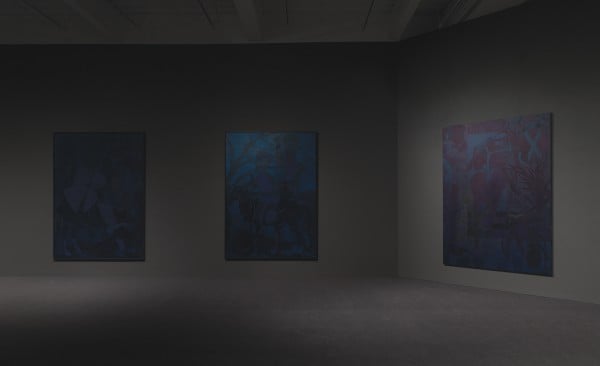
Courtesy David Zwirner, New York/London
This picture may look a bit dark, but it’s actually far too bright: It’s a view into a room in the Chris Ofili show at the New Museum that is almost unlit, full of big paintings done in blacks and blues that are barely visible. As far as I’m concerned, this room saves a show–and an artist–that otherwise leaves me unimpressed. If most Ofilis are excessively easygoing, almost pandering to our desire for attractive and legible art, his black paintings, in their almost-black room, are all about resistance and recalcitrance and a refusal to make things easy. In that, they capture the resistance and difficulty that racial blackness comes wrapped in, as it struggles for a place in a world that’s mostly white. I don’t know of any other body of work that does as good a job at addressing the combination of invisibility and excessive presence that our age imposes on people of African descent. (Although, as I’ve argued before, the black paintings of Mark Rothko and Ad Reinhardt touch, willy-nilly, on such topics.) After seeing these Ofilis, even Kara Walker’s black-on-white silhouettes of racial dysfunction seem too legible to get at the true opacities of those dynamics. There are Walker-like moments in the Ofili black paintings: A picture called “Iscariot Blues” depicts a lynched figure. But the very fact that you can barely make those moments out gives them added force, and makes the paintings seem more accurate depictions of such shadowy realities. We see them as through a glass, darkly.
And then, as our eyes adapt to the gloom, things begin to come clear–and we realize that there could be a tiny touch of satire in Ofili’s blue view of blackness. What would things be like if the idiotic, skin-deep differences between the supposed “races” of humanity were about chroma instead of value?: Red people versus greens might yield a different emotional palette. Sounds rather Christmas-y, in fact.
For a full survey of past Daily Pics visit blakegopnik.com/archive.